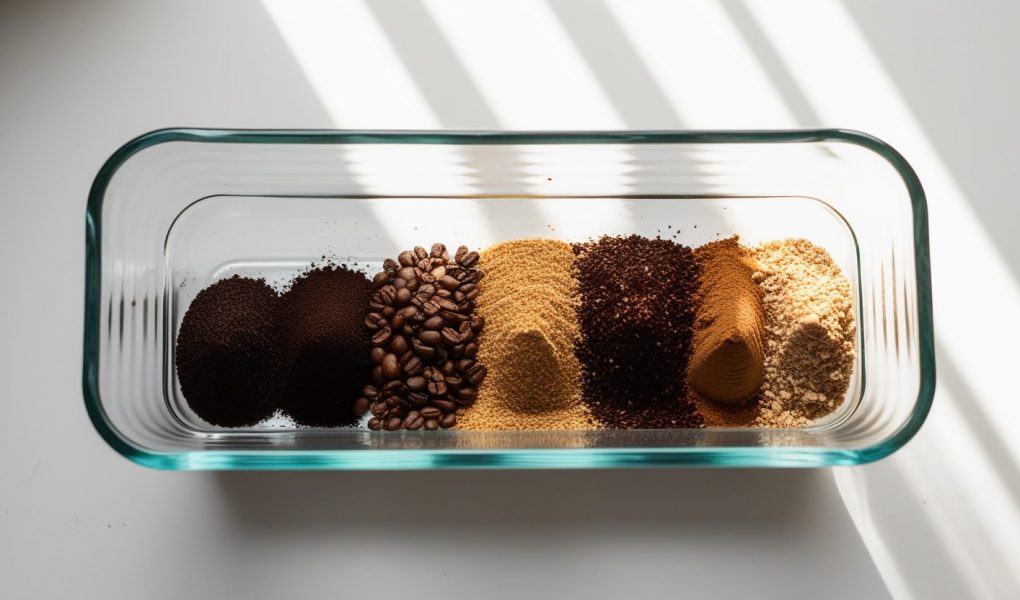The way your coffee is ground can make or break your brew. From the robust, full-bodied flavors of a French press to the quick, bold shots of espresso, every brewing method demands a specific grind size to extract the best flavors. Too coarse, and your coffee may taste weak and sour; too fine, and it risks becoming bitter. Getting it just right requires a bit of trial and error—but once you do, the rewards are undeniable.
Grind size doesn’t just affect taste; it determines how water flows through the coffee grounds, influencing extraction time and mouthfeel. Whether you’re a fan of a mellow pour-over or crave the intensity of a shot of espresso, understanding and fine-tuning your grind size is essential. With the right adjustments, a simple tweak in your grind can elevate a flat cup of coffee into a rich, flavorful experience.
This guide will walk you through the different grind sizes and how they pair with various brewing methods. You’ll also learn tips to make grinding coffee at home easier and troubleshoot common issues like bitterness or weak flavor. Ready to unlock the potential hiding in your beans? Let’s dive in.
Types of Grind Sizes and Their Best Brewing Methods
Each brewing method relies on a specific grind size to achieve the ideal extraction, resulting in the perfect balance of flavor, strength, and aroma. Below is a table to guide you through the five main grind sizes and how they pair with various brewing techniques.

| Grind Size | Texture | Best for These Methods | Brewing Outcome |
|---|---|---|---|
| Coarse Grind | Chunky, similar to sea salt | French Press, Cold Brew | Full-bodied, smooth, less bitterness |
| Medium-Coarse Grind | Rough sand | Chemex, Clever Dripper | Clean, bright flavors with mild acidity |
| Medium Grind | Regular sand texture | Drip Coffee Makers, AeroPress (longer brew) | Balanced flavor, ideal for everyday coffee |
| Fine Grind | Powdery, like table salt | Espresso Machines, AeroPress (short brew) | Bold, intense, concentrated coffee |
| Extra-Fine Grind | Flour-like | Turkish Coffee | Thick, syrupy, with deep, rich flavors |
Choosing the right grind size ensures water passes through the grounds at the ideal speed. Coarser grinds slow extraction and suit methods that steep longer, like cold brew or French press, while finer grinds are essential for espresso and Turkish coffee, where rapid extraction is key.
Adjusting grind size can also fine-tune your coffee’s taste. If a brew feels weak, try a finer grind. Too bitter? Coarsen it up. Knowing when to tweak the grind based on your brewing method will help you unlock the true potential of every cup.
How Grind Size Affects Flavor
Grind size plays a pivotal role in how coffee tastes, controlling how water interacts with the grounds during brewing. If your grind is too coarse, water flows too quickly, leaving the coffee under-extracted. The result? A sour, weak, or flat cup lacking depth and sweetness. Coarse grinds suit methods like French press, which require longer contact between water and coffee to draw out full flavors.
On the other hand, too fine a grind slows the water down, risking over-extraction. This leads to a bitter, unpleasant cup as the water pulls out more compounds than desired. Espresso, with its quick extraction time, demands a fine grind to produce bold, concentrated flavors without bitterness. Similarly, Turkish coffee needs an extra-fine grind to create its signature thick and rich texture.
Finding the right balance is key. A medium grind generally works well for drip machines, offering a smooth and balanced brew. However, if the coffee tastes off, a small adjustment to the grind can have a noticeable impact—coarser if the coffee is too strong, finer if it’s too weak. Tuning your grind to match the brewing method ensures you unlock the optimal flavors from your beans every time.
Tips for Grinding Coffee at Home
Grinding your own coffee at home is one of the easiest ways to improve your brew. Freshly ground beans retain their oils and aromas, giving your cup more character and depth. To get started, invest in a burr grinder—it offers consistent grind sizes, unlike blade grinders that create uneven grounds, which can lead to over- or under-extraction. Burr grinders also give you full control over the grind size, making it easier to adjust based on your brewing method.
When grinding, aim for only what you need. Coffee starts losing its freshness within minutes of grinding, so it’s best to grind right before brewing. Keep your grinder clean, as leftover grounds can stale and impact flavor. A quick brush after each use can prevent buildup.
You’ll also want to experiment with your grind size based on your environment. Higher altitudes can affect extraction, as can the hardness of your water. If your coffee tastes different than usual, tweak the grind to see how it changes the result.
Don’t be afraid to adjust as you go. A coarser grind might make your French press sing, while an espresso shot could benefit from an even finer grind than you expected. Small changes can make a big difference—so trust your taste and enjoy the process.
Troubleshooting Common Issues
Issue: Coffee Tastes Sour or Weak
This is usually a sign of under-extraction, meaning the water didn’t spend enough time pulling flavor from the grounds. Try grinding your coffee a bit finer to slow down the water flow and extract more. Also, double-check your brew time and water temperature—both need to be just right to get a balanced taste.
Issue: Coffee Tastes Bitter
Bitterness means the coffee is over-extracted. To fix this, grind your coffee slightly coarser. This will allow the water to pass through the grounds faster, preventing it from extracting too many harsh flavors. Reducing the brewing time or using cooler water can also help.
Issue: Inconsistent Flavor Between Brews
If your coffee doesn’t taste the same each time, uneven grounds could be the culprit. Make sure you’re using a burr grinder, which produces more consistent particles. Additionally, store your beans properly in an airtight container to keep them fresh between uses.
Issue: Grinder Clogs or Stalls
When grinding fine for espresso or Turkish coffee, some grinders can struggle. Try pulsing the grinder instead of running it continuously. If it’s still clogging, clean the grinder regularly to remove old coffee oils and grounds that can build up inside.
By understanding these common issues, you can easily fine-tune your grind size and brew method to achieve consistently delicious coffee every time.
Conclusion
Mastering the right grind size for your brew method is a game-changer for any coffee enthusiast. The grind influences everything—from how water flows through the grounds to how flavors develop in the cup. Whether you enjoy the boldness of espresso, the clarity of a Chemex, or the smoothness of a French press, dialing in your grind size brings out the best in your beans.
The beauty of grinding coffee at home lies in the control it gives you. Every adjustment, no matter how small, opens up new possibilities to fine-tune your brew. Experiment with grind sizes, listen to what your coffee tells you, and don’t hesitate to make changes when the flavor feels off. Over time, you’ll develop an intuitive feel for what works with each brewing method, transforming your coffee routine into a personalized ritual.
The journey to perfecting grind size takes patience and curiosity, but the reward is always in the cup—a richer, smoother brew that reflects your attention to detail. Keep exploring, enjoy the process, and savor the little wins along the way. After all, the perfect coffee isn’t just about following steps—it’s about making each cup your own.



